CONTEMPORARY THINKING ON WILDLIFE & ZOO-BASED CONSERVATION
The Great Elephant Migration
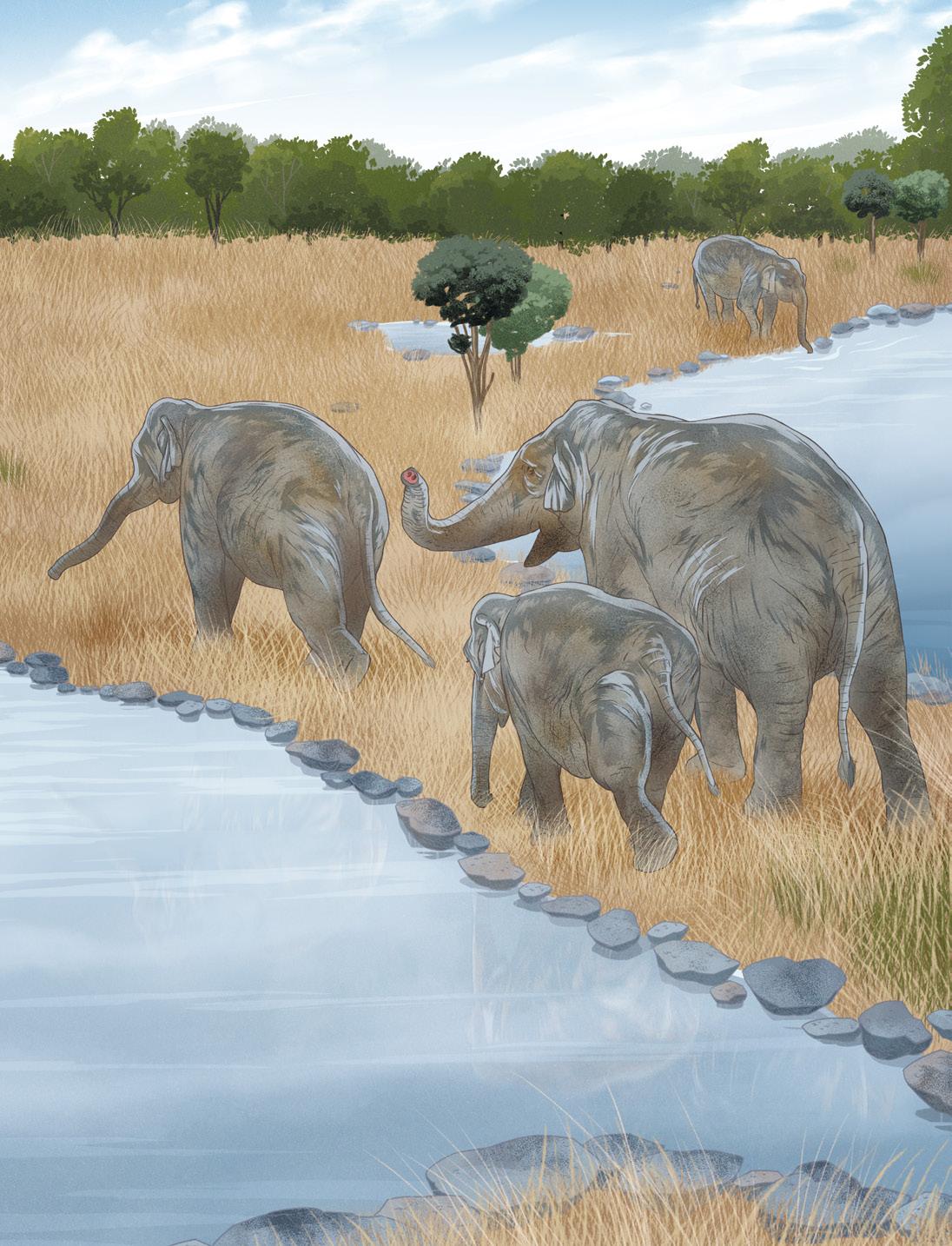
A new home is on the horizon for the Asian Elephant herd
Coffee for Wildlife
Meet a young fundraiser Canines in conservation
Artist’s impression

ZOOS VICTORIA MAGAZINE
ISSUE #14
AUTUMN/WINTER 2023
Thank you so much for your support and commitment to helping us fight wildlife extinction.
Your generosity helps care for animals across our four zoos: Healesville Sanctuary, Kyabram Fauna Park, Melbourne Zoo and Werribee Open Range Zoo, and also helps us protect threatened species for a future rich in wildlife.
We would greatly appreciate if you could take the time to complete our short survey. We would love to know more about you, and what you think about Zoos Victoria and our work. We would like to understand:
° what’s important to you
° how you would like us to communicate with you, to ensure you have the best possible experience engaging with us.
We appreciate that your time is precious, the survey will only take a couple of minutes to complete. Please be assured that your responses will remain private and confidential.
WE VALUE YOUR FEEDBACK. HAVE YOUR SAY IN OUR SURVEY.
Once you complete the survey, you will go into a draw to win one of three behind-the-scenes experiences at Melbourne Zoo, Healesville Sanctuary, Kyabram Fauna Park and Werribee Open Range Zoo.

Take the survey today.
To complete the survey:
Thank you once again for generously giving your time and support to Zoos Victoria.
Click here
Hello!
I am in constant awe of our young conservationists using their voices to champion local threatened species and sharing our passion to fight wildlife extinction. Your contribution not only supports the important conservation work we are doing now, but is key to securing a future rich in wildlife for the next generation.
In this edition of ZV magazine, we spoke to Zoos Victoria Member, Arabella, a young conservationist whose persistence and dedication paid off in her mission to help the Critically Endangered Leadbeater’s Possum. We also cover Zoos Victoria’s Asian Elephant herd, who are packing their trunks to move to a purpose-built expansive 21-hectare habitat at Werribee Open Range Zoo next year. But before they make the 35-kilometre migration from Melbourne Zoo, we take a look at the logistics involved to create a positive and safe experience for all. By creating a market for shade-grown coffee, Zoos Victoria’s Coffee for Wildlife program is reducing pressure on threatened species while supporting local communities. Read more in this edition.
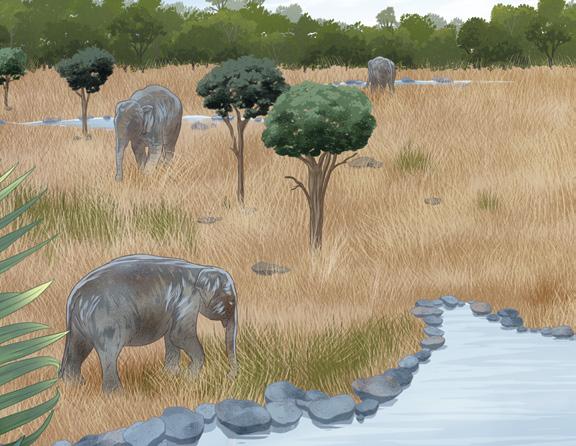

The wetlands of Kyabram Fauna Park have become a haven for countless animals — both permanent residents and seasonal blow-ins thanks to conservation breeding programs and land rehabilitation efforts of staff and local volunteers.
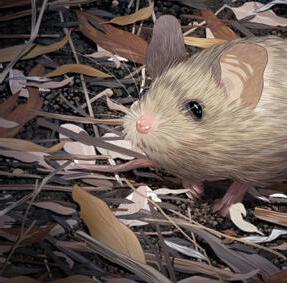
Lastly, armed with donations from generous animal lovers, we cover how Zoos Victoria swung into action after the devastating bushfires of 2019-20 — treating injured wildlife, helping threatened species and preparing for future disasters.
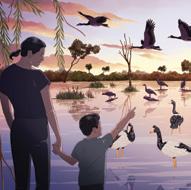
I hope you enjoy reading these articles and more in this edition. I would like to extend a heartfelt thank you for your ongoing support for all that we do.

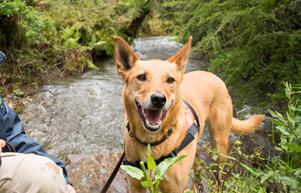

16 Detection dogs Plus 18 Spotlight on the environment 22 Protecting all wildlife, tiny and tall 23 Partners and donors Out of the fire How your donations are making a real difference Made in the shade Coffee for Wildlife is supporting conservation
08 11 14
20
Dr Jenny Gray / CEO, Zoos Victoria
Kyabram Fauna Park
Our young fundraiser
3 AUTUMN/WINTER 2023
04 CONTENTS
The Great Elephant Migration Werribee plans to welcome the Asian Elephant herd
THE GREAT ELEPHANT
Planning is underway to ensure
Zoos
Victoria’s Asian Elephants experience a smooth move to a spacious new habitat at Werribee Open Range Zoo.
Zoos Victoria’s Asian Elephants are packing their trunks to move to a purposebuilt, expansive 21-hectare habitat at Werribee Open Range Zoo next year.
But before they make the 35-kilometre migration from Melbourne Zoo, there’s a lot of logistics involved to create a positive and safe experience for all.
Trail of the Elephants Project Officer, Lucy, has dedicated 24 years to learning about the behaviours and social interactions of these graceful animals. She explains that there are many complexities to moving an entire Asian Elephant herd: organising cranes, transport trucks, calculating the timing required to load, transport and unload elephants, coordinating all the people involved who all have different roles to play, and crate training the elephants to ensure the move is a positive experience. With so many moving parts, Lucy says, “the guiding principle underlying all the decisions being made is to maintain a calm and safe environment at all times”.
Training for transition
The Trail of the Elephants team is strategically building a positive experience for the herd with the transport crates to ensure the migration to Werribee is a calm and safe transition. Lucy explains that the 10 elephants will be moved in three, separate stages over a short period of time.
“Using science-based evidence to inform our management decisions, we understand who the heavily bonded individuals are within the herd and will move them according to these groupings,” says Lucy.
The elephants will be trained to enter the four specially designed transport crates which will be positioned within the Melbourne Zoo Trail space. Initially, the herd will spend time getting used to seeing the crates in their environment. Resources (like browse vegetation) will then be placed around the crates to encourage foraging nearby. Soon, the crates will become an extension of the habitat and opened to allow the herd to investigate further. Keepers will provide positive reinforcement by giving the
Name
Asian Elephant Class
Mammalia Status
Endangered Regions
South-east Asia
WORDS Ethan Jenkins ILLUSTRATION Phil Constantinesco
FACT FILE ● Past distribution ● Current distribution 4 ANIMAL ANIMAL ZVMAG
MIGRATION

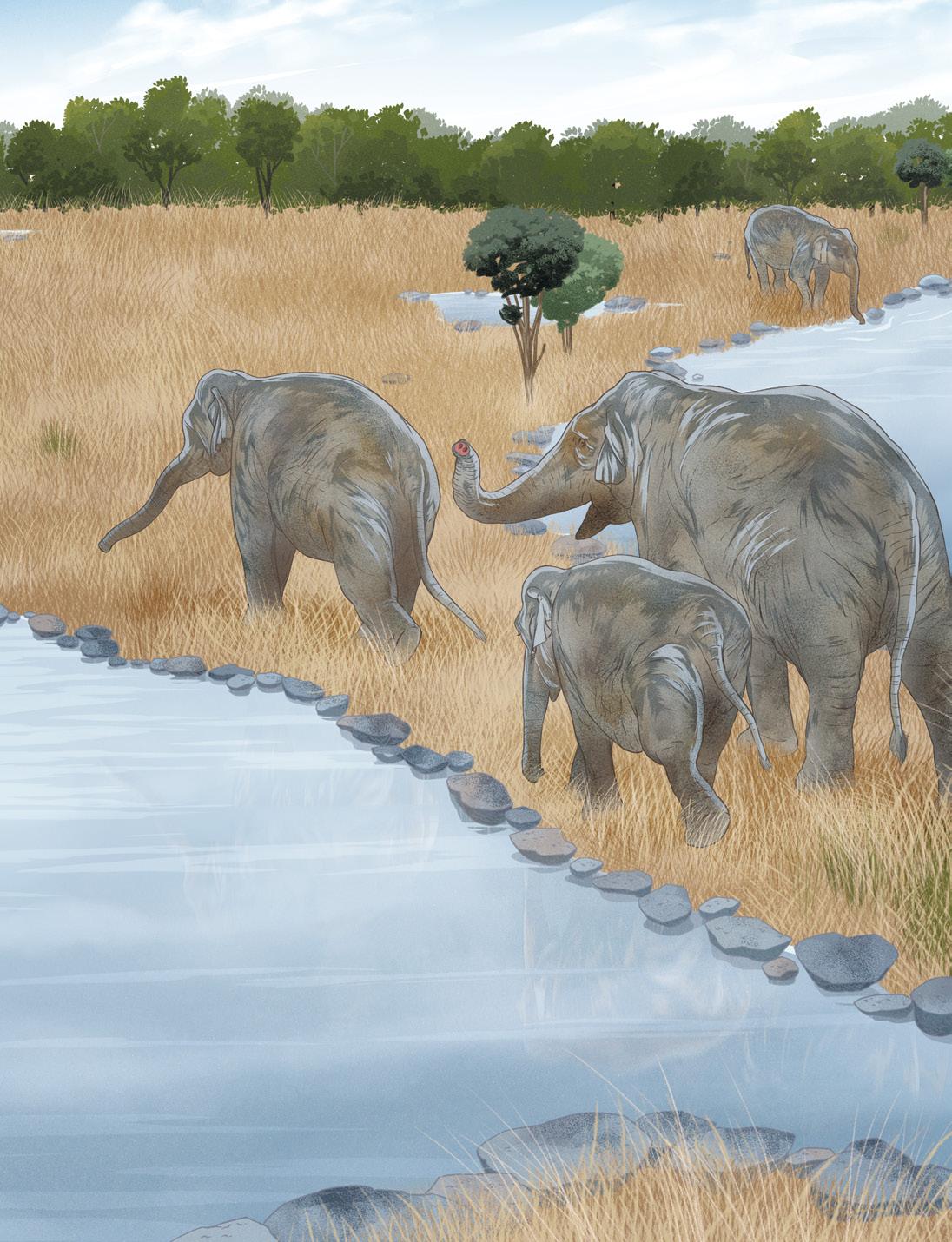
LUCY/ TRAIL OF THE ELEPHANTS PROJECT OFFICER 5 AUTUMN/WINTER 2023 ASIAN ELEPHANTS
Using science-based evidence to inform our management decisions, we understand who the heavily bonded individuals are within the herd and will move them according to these groupings …
ANIMAL
HOME SWEET HOME
Thanks to an $88 million grant from the Victorian Government, the Zoos Victoria’s Asian Elephant herd will move to a purpose-built habitat at Werribee Open Range Zoo in 2024, with the herd able to roam across 21 hectares. The open range habitat will feature a sandpit and deepwater pools. The communal sleeping area has been designed to enable natural herd births in the future. Five outer habitats will retain and build upon existing vegetation and significant trees. Two dedicated overpass bridges will allow the elephants to pass over visitor walking trails, between the central space and outer habitats.

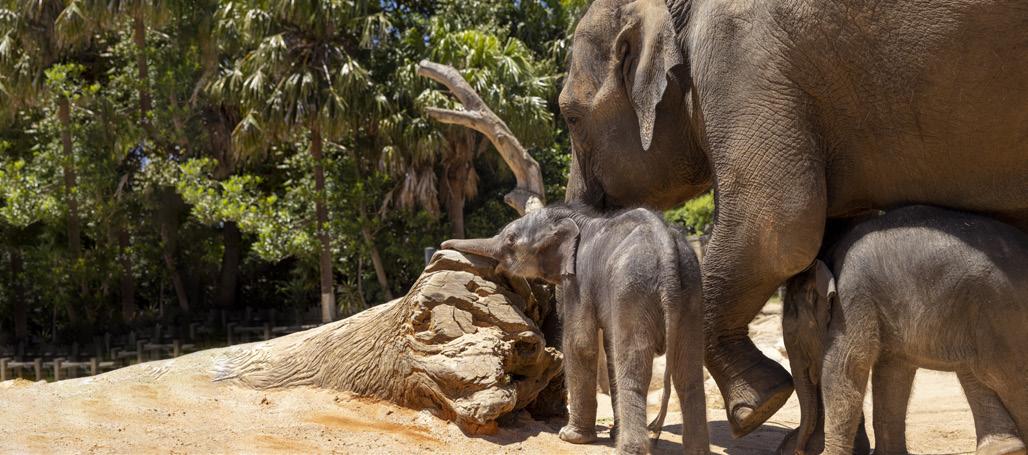
elephants their favourite foods whenever they enter the crates. This training will progress at the elephants’ pace, giving them choice and control, as the duration of time the elephants spend in the crates progressively increases.
The mother-and-calf crates are customdesigned to house the calf in a front compartment, while allowing trunk and visual contact between mother and calf throughout transportation. There are a couple of key considerations for ensuring this is a positive experience for the elephant calves throughout this process. One is to train them to accept being partially separated from their mothers in the crates by using reinforcers in the form of fruit, hay or bran mix. The other is to train them for blood draws so our veterinary team can monitor their overall health while they are at Melbourne Zoo before the big move, and then again at Werribee Open Range Zoo once they have taken their first steps into their new habitat.
Expressing natural behaviours
Inspired by natural biology, the Trail of the Elephant team’s philosophy is centred around two important questions: How do these animals live in the wild? And how can we replicate that in their everyday care?
Wild elephants are very resource driven and will walk large distances in search of food. On average, they will travel about five kilometres a day. However, depending on the resources available to them, this can range anywhere from three kilometres to 20 kilometres. Elephants will often stay in one area to forage on grasses or browse (trees and shrubs including branches, bark, leaves and buds), and then move on when that is depleted. They also search for water bodies and muddy wallows to maintain their skin health, protect themselves from the sun and cool down during the hotter parts of the day. Elephants only lie down to sleep for around five hours at night, otherwise they are very active, foraging in the earlier hours of the morning, throughout the day, and at dusk.
Pictured In 2024, Melbourne Zoo’s Endangered Asian Elephant herd will move to a new habitat at Werribee Open Range Zoo.
6 ZVMAG
SUPPORTING ELEPHANTS IN THE WILD
The move marks an important milestone for Zoos Victoria, which is part of a regional breeding program for Asian Elephants. Once widespread throughout Asia, the species is currently classified as Endangered in t he wild by the International Union for Conservation of Nature’s Red List. To support Asian Elephant populations in the wild, Zoos Victoria has formed a partnership with Fauna & Flora International (FFI), a not-forprofit organisation that is working in the field to help better understand human-elephant conflict and safeguard the future of wild Asian Elephants. Zoos Victoria also supports two projects in Sumatra through the International Elephant Project. A wildlife ambulance project at Syiah Kuala University in Banda Aceh, Sumatra, provides care and welfare for the island’s elephants. Specialist training is also provided at the university, with the long-term goal of establishing a pool of well-trained wildlife veterinarians. The second project focuses on Asian Elephant conservation in Way Kambas National Park, in southern Sumatra which is home to 180 wild Sumatran Elephants. This elephant population is threatened by illegal logging, poaching, land cultivation, cattle grazing and human-elephant conflict. Zoos Victoria has provided funding to help replace GPS collars used in the Elephant Response Units, which aids patrolling efforts and human-elephant conflict mitigation strategies.
The design of the Asian Elephant herd’s home at Melbourne Zoo ensures the growing herd can exercise and explore natural behaviours by interacting with different substrates and landscapes. These environments meet the herd’s biological and exercise requirements by creating opportunities for swimming and various complex ways of foraging for food.
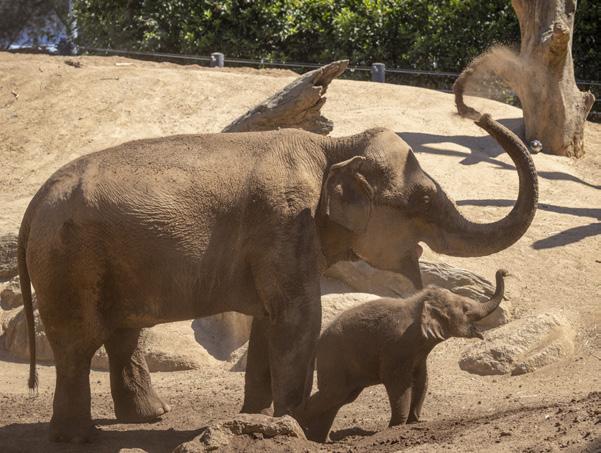
“We are always looking at ways to encourage the elephants to express natural behaviours,” explains Lucy. “This may include digging for minerals, foraging, reaching up high, walking over varied terrain, swimming and wallowing, all of which we encourage here at Melbourne Zoo, but will be even more incredible over a large space where they will have opportunities to move large distances in search of resources.”
The expansive new habitat at Werribee Open Range Zoo will also allow more opportunities to explore herd social dynamics of ‘fission-fusion’, where herd members can move away from each other, spread out and then coming back together, which is what they do in the wild. This includes having the bull elephants move in and out of the female herd, or stay on the periphery if they choose.
MAKE A DIFFERENCE
We’re sparing no expense to build the herd a home that will ensure world-leading welfare outcomes for their lifetime. However, their habitat is only one part of the puzzle. Resources and infrastructure are needed to properly care for elephants, and moving the herd to a new home is a complicated and expensive project. Your help will make all the difference to ensure a safe and smooth transition, go to: zoo.org.au/donate
7 AUTUMN/WINTER 2023 ASIAN ELEPHANTS
Out of the fire
Armed with donations from generous animal lovers, Zoos Victoria swung into action after the devastating bushfires of 2019-20 – treating injured wildlife, helping threatened species and preparing for future disasters.
WORDS Susan Horsburgh ILLUSTRATIONS Phil Constantinesco
Soon after bushfires tore through Mallacoota in the dying days of 2019, veterinarian Dr Leanne Wicker flew into the isolated Victorian seaside town, one of the first vets to assess the wildlife devastation. As shattered locals surveyed what was left of their homes, injured animals limped into town for help. “It was an emotional week for everybody,” recalls Dr Wicker, Zoos Victoria’s Wildlife Health and Welfare Advisor. “Every minute of every day, it felt like there was a new challenge. Initially, it felt insurmountable, but then we kicked into gear – we were evolving as we went.”
Working around the clock, Dr Wicker set up a triage station with the Department of Energy, Environment and Climate Action, treating everything from frogmouths to feathertail gliders. When she flew out 10 days later on an RAAF C-27J Spartan, she made a special request to Zoos Victoria, asking if three extra passengers – Leafy, Vicky and Spinach – could join her on the journey home. She didn’t know if the three koalas would survive, but she knew the hospital at Healesville Sanctuary was their best hope, as they
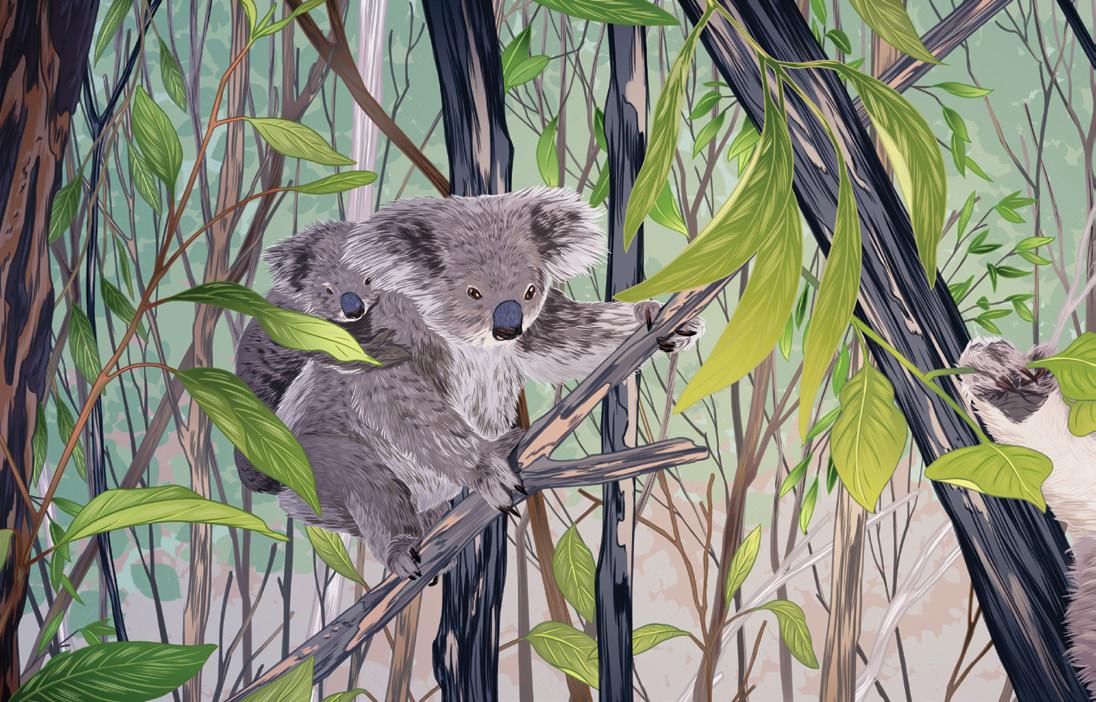
8 ZVMAG DONATIONS
struggled with dehydration and the risk of infection. Tired, stressed and badly burnt, the bandaged trio were given a hero’s welcome when they touched down.
“They became quite well known – Vicky had a following on social media,” says Dr Wicker. “A lot of hope was invested in those animals.”
A global show of support
That terrible summer, footage of wounded fauna was beamed across Australia and around the world, sparking an outpouring of generosity from wildlife lovers heartbroken that an estimated 1 billion animals had perished in the fires. In all, Zoos Victoria received $13 million in bushfire funding. In Healesville, local children even set up a lemonade stand outside the Sanctuary to raise money.
The big takeaway? “Australia and the world really care about the welfare of wildlife,” says Dr Wicker. “We already valued animals – I just don’t think it had been seen. The overwhelming community expectation was that we respond quickly and we respond well, that it’s worth putting money into wildlife… What was so wonderful was this feeling that Australia was totally behind us. There have been so many brilliant developments.”

GENEROSITY IMPACT
Ground-breaking projects
Among them is a $2.55 million wildlife hospital, opened last year at Werribee Open Range Zoo, thanks in large part to $1.5 million in donations to the RSPCA following the Black Summer bushfires. The RSPCA Koala Ward at Werribee Open Range Zoo features two fully equipped operating rooms, which treats sick and injured koalas, native birds, reptiles and mammals in Melbourne’s west.
In the wake of the bushfires, Zoos Victoria received a total of $13 million in funding
$1.5 million in donations went towards opening the RSPCA Koala Ward at Werribee Open Range Zoo
A $500,000 grant from the Australian Government enabled Melbourne Zoo’s world-class frog-breeding facility to open in 2022
At Melbourne Zoo, a $500,000 grant from the Australian Government’s Bushfire Recovery Program for Wildlife and their Habitats enabled a $658,180 world-class frog-breeding facility to open in 2022. Integral to saving three endangered species: the Spotted Tree Frog, Watson’s Tree Frog and Giant Burrowing Frog, the biologically sealed rooms of the Amphibian Bushfire Recovery Centre are light- and temperature-controlled to mimic the frogs’ natural environments. The aim is to selectively breed disease-resistant frogs, eventually releasing them back into the wild.
What was so wonderful was this feeling that Australia was totally behind us. There have been so many brilliant developments.
DR LEANNE WICKER / WILDLIFE HEALTH AND WELFARE ADVISOR, ZOOS VICTORIA
9 AUTUMN/WINTER 2023 BUSHFIRE REPORT
$$$$
DONATIONS
Caring for the entire ecosystem
Bushfires destroyed the homes of countless creatures: forest canopies disappeared, exposing normally dark, cooler habitats to burning sunlight; and alpine streams became clogged with ash, fallen trees and debris, disrupting breeding seasons of native frogs and fish. “There are still whole areas that have a long way to go before they’re functioning and supporting wildlife,” says Dr Wicker.
Asked to name the species of most concern, Dr Wicker replies: “All of them. Fires impact the tiniest insects all the way up to those great iconic Australian species we all love – and they won’t exist if we don’t think holistically about the entire ecosystem they come from.”
PAUL KELLY
Melbourne Zoo has also used bushfire funding for a new captive breeding program for the Pookila, a tiny endangered native mouse. With fewer than 3,000 thought to be left in the state, genetically diverse breeding pairs have been matched and housed at both the Zoo and Moonlit Sanctuary, with the ultimate goal of returning offspring to their natural habitats.

A collaborative approach
In preparation for future disasters, Zoos Victoria has set up an emergency network, training vets and vet nurses from around the state in wildlife treatment. “Those fires catalysed a change in approach where we’re working together to be more effective,” says Dr Wicker. “That’s game changing.”
The public may have only seen vets treating burnt wildlife on the frontline, but Dr Wicker says there was longer term rehabilitation and plenty more going on behind the scenes. For example, Healesville Sanctuary offered temporary refuge to Brush-tailed Rock-wallabies from an ACT conservation breeding program that was surrounded by fire, while Melbourne Zoo housed a threatened population of Eastern Bristlebirds that were similarly in danger, later returning them to Mallacoota.
Leading Australian singer-songwriter, Paul Kelly, released a powerful song in the wake of the 2019—20 bushfires. Entitled ‘Sleep, Australia, Sleep’, the song is a lament in the form of a lullaby, and a critique of the widespread attitude among humans that we are the most important life form on the planet. The lyrics of the song talk of sleeping our way towards mass destruction of the planet and its species. To accompany the song, Paul released a powerful video produced and directed by Siân Darling. Paul and Siân advocate for the environment; their support helps Zoos Victoria’s commitment to fight wildlife extinction and secure a future rich in wildlife.
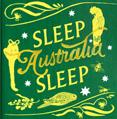
Dr Wicker is grateful to everyone for donating, but especially long-standing Zoos Victoria supporters. “The reason we were able to be so responsive and resilient, and do what we’ve been able to do, is largely because of that long-term support – a wildlife hospital costs a huge amount to run,” she says. “I’d like to thank everyone for trusting that we’d be strategic and put that money to good use. It really has been.”
As for the koalas airlifted out of Mallacoota, sadly Spinach died from his injuries, but Leafy and Vicky returned to their home a year after the rescue mission.
Above A captive breeding program has been established to support the population recovery of the Pookila.
“That was so special,” says Dr Wicker. “The koalas that were released, particularly back in Mallacoota, did so well – there were babies by the end of the season – and every time we’d go back, the locals would ask, ‘How are they going?’ and we’d say, ‘They’re great!’ They became a real symbol of hope.”
ALBUM
ARIELLE
ZVMAG 10
ARTWORK:
GAMBLE
Made in the shade
By creating a market for shade-grown coffee, Zoos Victoria’s Coffee for Wildlife program is reducing pressure on threatened species while supporting local communities.
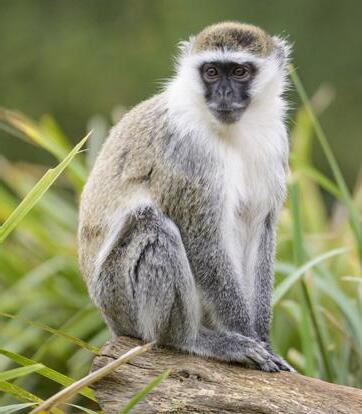

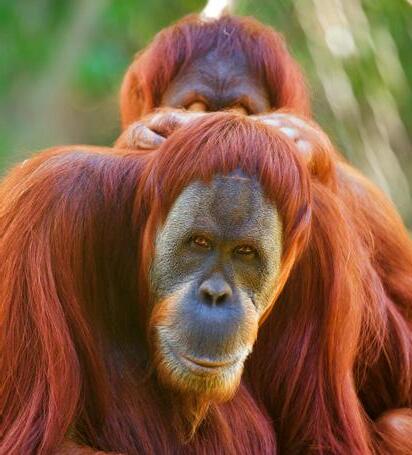 WORDS Steve Colquhoun
WORDS Steve Colquhoun
AUTUMN/WINTER 2023 SUMATRAN
11
ORANGUTAN / VERVET MONKEY / MATSCHIE’S TREE-KANGAROO
The Huon Peninsula, on the remote east coast of Papua New Guinea, is described as the place “where the rainforest touches the sky”. One of the last highelevation rainforests in the world, it once teemed with Matschie’s Tree-kangaroos.
Today, the elusive, tree-dwelling marsupial with distinctive chestnut fur and golden belly is known as “the ghost of the forest”, not only because it was hunted by local villagers for its meat and fur before being classified as Endangered in 1996. It’s also a direct result of extensive land-clearing activities for farming, industry and development, depleting the tree-kangaroo’s habitats.
A key driver of land clearing in tropical nations such as Papua New Guinea is the world’s ongoing love affair with coffee. Melburnians alone are said to drink around 31 million cups each week. “Most of the coffee we drink is sun-grown, which requires deforestation to replace natural forests with coffee plants,” explains Ashleigh, Zoos Victoria’s Senior Manager, Community Conservation Campaigns.
The farming operations that have taken a toll on the habitat of the Matschie’s Tree-kangaroo are not an isolated case. In Sumatra, illegal coffee farming infringes on the borders of a 2.5 million hectare area known as the Leuser Ecosystem, which is the last place on earth where orangutans, elephants, rhinoceros and tigers all still roam wild together. And in Ethiopia, where coffee is the nation’s largest export product, land clearing for coffee crops bites into the habitats of species including Vervet Monkeys, which are native to south-east Africa and noted for their human-like characteristics.
Ashleigh says current coffee consumption habits in Australia point to a tripling in demand for beans by 2050. The majority will be grown in the ‘bean belt’, an area between the tropics of Cancer and Capricorn that has the ideal climate, yet is also dense in rainforest and wildlife biodiversity.



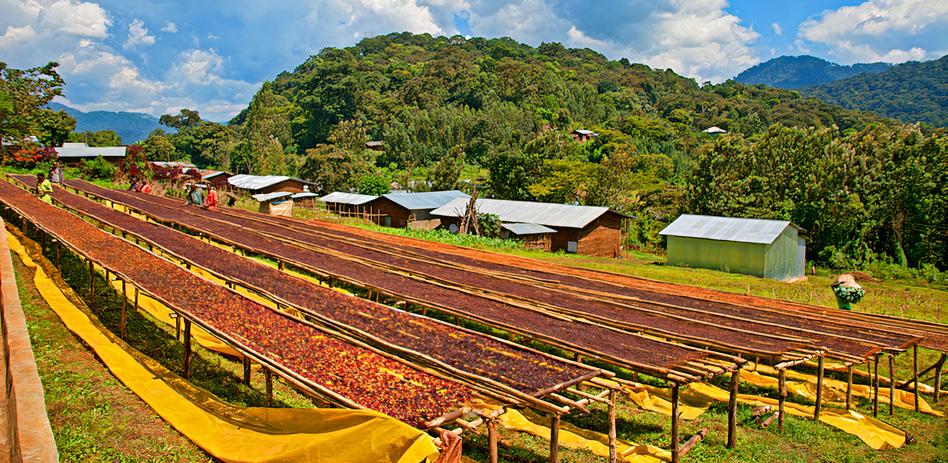 Above Coffee on drying beds in Ethiopia.
Below (left to right) You can stop by any of our zoo cafes for a cup; a worker handling Coffee for Wildlife beans.
Above Coffee on drying beds in Ethiopia.
Below (left to right) You can stop by any of our zoo cafes for a cup; a worker handling Coffee for Wildlife beans.
12 ZVMAG
Opposite The Coffee for Wildlife branded artwork incorporates the Sumatran Orangutan, the Matschie’s Tree-kangaroo and the Vervet Monkey (all pictured on the previous page).
CONSERVATION
“Climate modelling has shown we’re at a fork in the road in terms of the impact that coffee production will have on wildlife in the future, based on the decisions we make today on how we grow it,” she says.
A blend for biodiversity
In Papua New Guinea, the villagers and farmers of the Huon Peninsula are already changing the script by joining international efforts to conserve the Matschie’s Tree-kangaroo and other at-risk species. And in 2009, in a first for Papua New Guinea, the 760-square-kilometre YUS Conservation Area was established on the Huon Peninsula, imposing a ban on hunting, logging and mining activities.
Even more help is at hand, thanks to the launch of Coffee for Wildlife, a joint project between Zoos Victoria and Melbourne-based coffee roaster Genovese. Under the program, Zoos Victoria is selling three distinctive coffee blends grown in Papua New Guinea, Sumatra and Ethiopia, each derived from shade-grown coffee beans. Shade-grown coffee takes longer to mature on the plant, and therefore produces a richer and more intense flavour that will appeal to true coffee enthusiasts.
“Coffee for Wildlife helps protect these forests and the species that live there by only purchasing coffee that is shade-grown,” Ashleigh says. “This means the natural canopy can still grow above the coffee plants for native wildlife to live and flourish.”
Farming for the future
The program has the support of Papua New Guinean coffee farmers, who receive a fair price for their shade-grown coffee.
Hesing Wayain started planting coffee on the Huon Peninsula in 1997, and also farms other crops such as betel nuts and peanuts. “The Matschie’s Tree-kangaroo is an endangered animal, so in order for our grandchildren to see and know what kind of animal it is, we have to conserve it,” he says.
The farmers also enjoy the knowledge they are helping to protect not only the Matschie’s Tree-kangaroo, but hundreds of other species inhabiting the YUS Conservation Area such as the palm cockatoo, dwarf cassowary, common spotted cuscus, striped possum and Brown’s pademelon.
“The YUS Conservation Area is special because it supports our lives in so many ways,” Hesing says. “Like the fresh air we breathe, fresh water and fresh foods. I feel very proud when I produce quality coffee.”
Danny Samandingke has farmed the Huon Peninsula for 50 years and grows coffee, fruits and vegetables. He says programs such as Coffee for Wildlife also improve the lives of locals through increased prosperity, access to better education and medical services, and agricultural expertise that has increased growing productivity.
“It is an honour to be part of the team in the coffee movement chain as a farmer, retailer, exporter, importer and consumer,” he says. “We feel proud to be part of this unique untouched frontier of rainforest.”
Ashleigh says the program also highlights the importance of consumers choosing sustainable products where available, such as wildlife-friendly coffee. “Zoos Victoria partnered with Genovese Coffee and together we have undertaken rigorous research to select coffee projects from around the world that work to benefit farmers, forests and wildlife,” she says. “We have a real opportunity to make this change at a local level, as coffee is such a huge part of our culture.”
ENJOY A CUP
Buy a bag of Coffee for Wildlife from any Zoo Shop, online at zoo.org.au/coffee, or enjoy a cup of coffee on your next zoo visit. To purchase a Coffee for Wildlife subscription, go to genovese.com.au/product/coffee-forwildlife-subscriptions
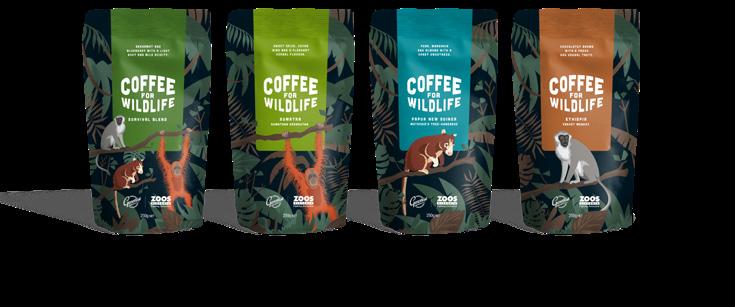
… the natural canopy can still grow above the coffee plants for native wildlife to live and flourish.
ASHLEIGH / SENIOR MANAGER, COMMUNITY CONSERVATION CAMPAIGNS, ZOOS VICTORIA
13 AUTUMN/WINTER 2023 SUMATRAN ORANGUTAN / VERVET
/ MATSCHIE’S TREE-KANGAROO
MONKEY
Restoring Kyabram’s Wetlands
Kyabram Fauna Park was just a 55-hectare parcel of degraded and flood-prone farmland, until nature-loving locals lobbied in town meetings to make it a wildlife sanctuary in 1976.
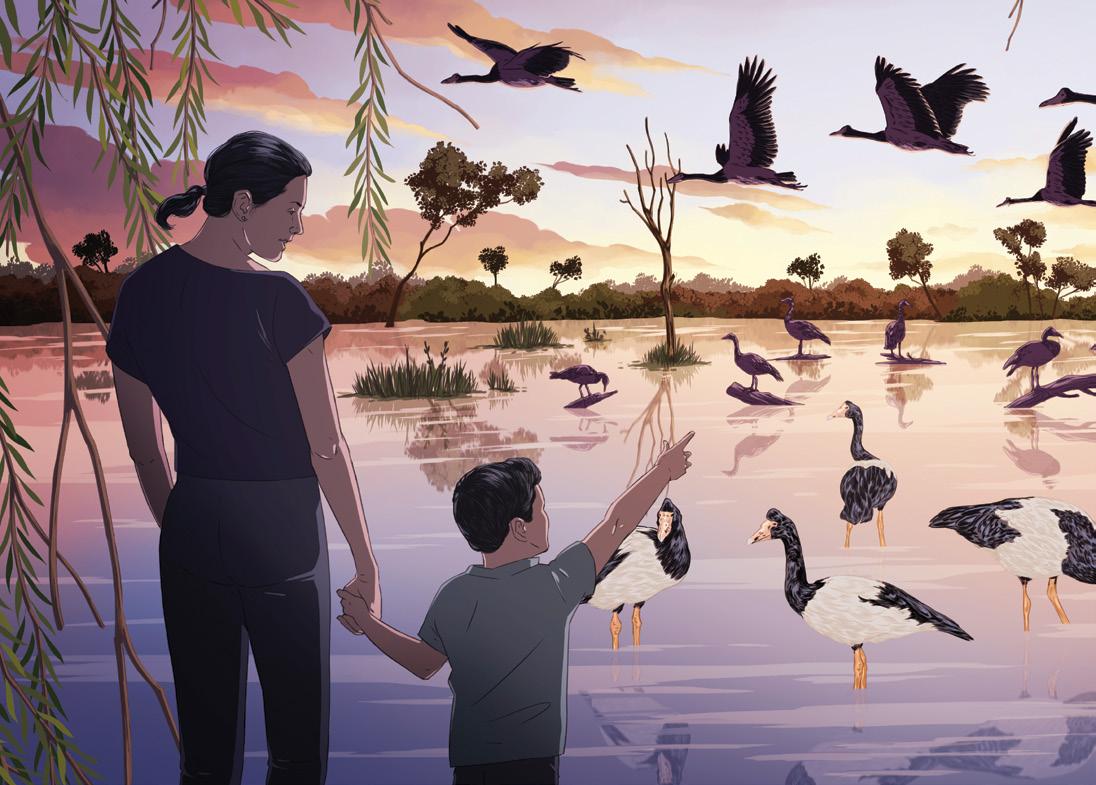
“It started out with just a few kangaroos and emus walking around the property,” says Kyabram Fauna Park Director, Lachlan Gordon. “People could come and have a look at them and walk around the grounds.”
Since then, volunteers and staff have planted 7,000 native trees, shrubs and grasses across the Park, and the area that serves as a run-off site for Kyabram’s rainwater has been transformed into 33 hectares of wetlands, with a range of habitats providing food and shelter for free-ranging wildlife. As a result, 35 bird species have returned to the area, including the Threatened Freckled Duck and Magpie Goose – a waterbird more commonly found in Far North Queensland.
CONSERVATION
Above Conservation efforts by the staff and community have created a significant habitat for waterbirds.
WORDS Susan Horsburgh ILLUSTRATION Phil Constantinesco
Thanks to the breeding programs and land rehabilitation efforts of staff and local volunteers, the wetlands of Kyabram Fauna Park have become a haven for countless animals – both permanent residents and seasonal blow-ins.
14 ZVMAG
“There have been 105 animal species identified in the wetlands and surrounding bushland of the Park – that’s thanks to the restoration and conservation work done by the community and staff over the years,” says Lachlan.
“You could look at the wetlands as community conservation in action, because it’s taking the stormwater from Kyabram and funnelling that through filtration vegetation into our wetlands that ultimately provide water and habitat for the preservation of several threatened species. It’s turned into an important local habitat.”
For the many visiting waterfowl and other animals that spend spring and summer at the Park, the wetlands have become a haven. Staff and volunteers have removed non-native plants and noxious weeds, and stopped the decline of indigenous eucalypts, including scar trees that hold cultural significance for the local Yorta Yorta and Bangarang peoples.
The wetlands mean Kyabram Fauna Park has a unique point of difference among the four Zoos Victoria sites. “We’re hoping to open up additional walking tracks, so visitors can

Perhaps most notably, it helped breed the Eastern Barred Bandicoot (once extinct in the wild on mainland Australia) which was reclassified as endangered in 2021 – the first time there has been such a change in conservation status. “That was quite an achievement,” says Lachlan, “a world first”.
Kyabram Fauna Park was the first Victorian wildlife park to breed Brolgas, and has also bred koalas, Cape Barren Geese, Alpine Dingoes, Eastern Quolls, Spotted-tailed Quolls and Tasmanian Devils. The Park has recently acquired breeding pairs of Bush Stone-curlews and Malleefowls, both endangered in Victoria, with a view to releasing the offspring back into the wild.
According to Lachlan, the Regent Honeyeater and Plains-wanderer are next on the Park’s wish list now that it’s part of Zoos Victoria, which is committed to saving 27 priority threatened species across the state: “Conservation is the heartbeat of zoos and wildlife parks, and is the reason why these places exist – to secure the species that we’re losing in the wild and to provide a future that is rich in wildlife.”
experience the wetlands firsthand and be up close to nature,” says Lachlan, adding that 60 per cent of the Park’s wildlife comprises birds. “When our visitors are out walking around the Park, it’s as if they’re walking through the bush in the wild. Kyabram Fauna Park offers the chance to see visiting wildlife as much as you can see our permanent residents. There are species that are at the Park all year round and others that are just here for their respective breeding season. It’s certainly a birdwatcher’s paradise.”
For more than three decades, Kyabram Fauna Park has been involved in threatened species breeding programs.
The goal is to develop Kyabram Fauna Park into an eco-destination for Zoos Victoria Members and visitors wanting a taste of Australian nature – and an education: “I’m passionate about getting eco-tours going throughout our wetlands, so people can learn how birds in the wild nest and how various species that live in our wetlands are linked,” says Lachlan. “We want to teach them about the things we look for when we’re walking through the bush and how the community can help conserve some of these species and their habitats in their own backyards. It’s about giving people an opportunity to observe and appreciate animals, and learn how to contribute to saving them in their natural environments.”
Kyabram Fauna Park is a 2.5-hour drive from Melbourne. Visit the Park’s website before planning your visit: zoo.org.au/kyabram
In total, there have been 105 animal species identified in the wetlands and surrounding bushland of the park…
LACHLAN GORDON / KYABRAM FAUNA PARK DIRECTOR
VISIT KYABRAM
15 AUTUMN/WINTER 2023
KYABRAM FAUNA PARK
Canines in conservation
From providing companionship to the elderly and helping people with vision impairment to navigate life, dogs are known for supporting humans in many incredible ways. Now, some extraordinary canines are lending a paw to help some of Victoria’s most threatened wildlife species.

Rescue dogs Kip (a kelpie-cross) and Finn (a border collie) have passed Healesville Sanctuary’s detection-dog training program with flying colours and are now doing their bit to help fight extinction by using their noses to sniff out Critically Endangered Baw Baw Frogs in the wild.
For a special mission that requires patience, stamina and focus, it takes a special type of canine to do this important work. Chris, Zoos Victoria’s Threatened Species Program Coordinator, describes the key qualities that make for an effective detection dog:
“What we’re looking for in detection dogs is a rare combination of high energy and sharp focus. Not all high-energy dogs will have that focus, but a lot of working dogs will. These attributes contribute to a good work ethic, so you have a dog that doesn’t tire easily and can remain highly motivated for several hours.”
Uncovering elusive frogs
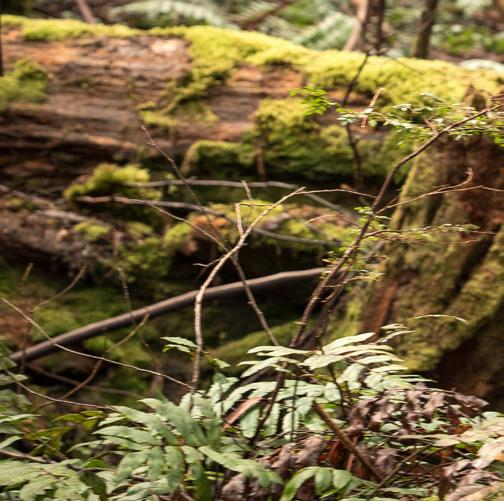
Tracking and observing the Baw Baw Frog in the wild can be particularly challenging, as detection involves listening for the males calling (which only happens during a small window of the year). Since juvenile and female Baw Baw Frogs don’t call at all, the team didn’t have the ability to detect them – until Kip and Finn’s incredible noses came into the picture.
“In conservation, there are many methods for monitoring different species. But there are also big gaps. The dogs are another tool in our toolbox that may fill some of those gaps,” says Chris. “Working with the dogs opens up that opportunity to detect all the frogs, regardless of whether they’re male, young or female. It also broadens the time of the year that the teams can be out there monitoring,” says Chris.
When it comes to fighting extinction, monitoring of vulnerable species in the wild is a crucial part of the process.
“We’re working with threatened species that are rare and quite cryptic. If we don’t know the condition of their populations, the outcomes of releases, or if we can’t collect individuals for captive breeding, then we find that the prospects for recovery of the species are diminished,” Chris says.
Detection dogs Kip and Finn have set tails wagging since joining Zoos Victoria’s Fighting Extinction team.
WORDS Jo Stewart PHOTOS Jo Howell
16 COMMUNITY ZVMAG Above
Wildlife Detection Dog Kip searching for Baw Baw Frogs in the field.
High-tech hounds
Beyond finding Baw Baw Frogs in the wild, detection dogs may end up with three or four other species in their repertoire.
“Once you’ve got all the training in place, adding the scent that you want them to find is relatively easy, provided you can find enough scent samples,” explains Chris, who adds that the bulk of training is spent reinforcing safety protocols and building a strong, trusting relationship between the handler and dog.
In many ways, a dog’s superior ability to detect scent is a form of innovation that’s more advanced than various forms of technology.
“Evidence from local and global conservation actions shows that dogs surpass much of the current technology and survey methods. Dogs are efficient and can cover a lot of terrain. Think of the ability of their nose as a form of technology. It’s very high-tech and better than many other technologies
we have available to us as conservationists,” says Chris.
The possibilities for using detection dogs in the field are endless. Chris contends that most species on the Fighting Extinction list would likely benefit from additional survey methods, such as detection dogs.
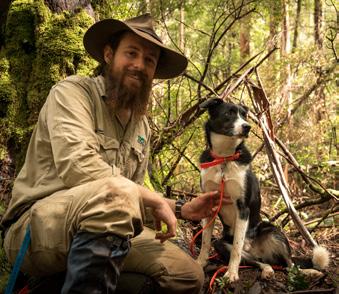
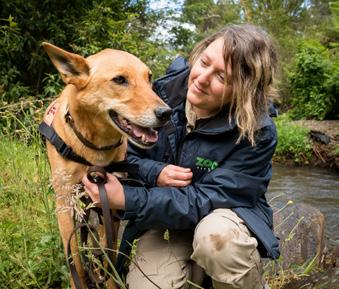

“The scope is huge. We’re still just scratching the surface of how dogs can support conservation work,” says Chris.
DOLLARS FOR DETECTION
Support the good work of the Fighting Extinction Wildlife Detection Dog Program by adopting a canine team member: zoo.org.au/animal-adopters
Evidence… shows that dogs surpass much of the current technology and survey methods. Think of the ability of their nose as a form of technology. It’s very high-tech…
CHRIS / ZOOS VICTORIA’S THREATENED SPECIES PROGRAM COORDINATOR
17 AUTUMN/WINTER 2023 DETECTION DOGS
Clockwise from bottom left Wildlife Detection Dog Officer Nick with Finn; officer Naomi with Kip; and Detection Dog Eddy, the Hungarian Wire-haired Vizla.
Time for change
When the Federal Government released the State of the Environment report in July 2022, it made for grim reading. Among the key findings were more severe weather events, bushfires and droughts putting ecosystems at risk, and continuing impacts on Indigenous peoples. More than 6 million hectares of primary forest have been cleared since 1990. Since 2016, an additional 202 animal and plant species have been listed as threatened.
For Dr Sally Sherwen, Director of Wildlife Conservation and Science for Zoos Victoria, that final figure is one of the most confronting from a report strewn with disturbing facts.


“It is beyond alarming that there’s been an 8 per cent increase in the number of threatened species listed, when that figure should absolutely be going in the opposite

direction,” she says. “But the other worry is that it’s based on an incomplete data set as well, which unfortunately means it’s probably just scratching the surface.”
The road to recovery
Dr Sherwen and her team of researchers and scientists work continuously to both monitor threatened species and implement recovery plans and interventions when necessary.
The release of the State of the Environment report revealed some shocking statistics, but the news is not all bad, with the protection of species and biodiversity firmly in the spotlight.
WORDS Carrie Hutchinson
PHOTOGRAPHY Jo Howell
PHILANTHROPY
We’re trying to unpack and unlearn the Western conservation approach, learn new ways that are more inclusive, and embrace a broader range of knowledge systems.
DR SALLY SHERWEN / DIRECTOR OF WILDLIFE CONSERVATION AND SCIENCE, ZOOS VICTORIA
18 ZVMAG
Above Dr Sally Sherwen believes the conservation movement is on the cusp of change.
“A lot of the interventions we work on are conservation breeding programs,” she says. “When species get to a certain risk level and we can breed them in our facilities to secure good genetics before releasing them when the threat’s been managed, that’s what we do.”
This approach is particularly suited to amphibians, such as the Critically Endangered Southern Corroboree Frog. Only about 50 are thought to exist in their natural habitat in the sub-alpine regions of Kosciuszko National Park, but a conservation breeding program is securing strong genetics, while environmental refuges free from the frog’s biggest threats, including the devastating chytrid fungus, are created within the park.
“For other species, that might not be the best approach,” continues Dr Sherwen. “In those cases, our conservation strategy might be doing some in situ or field interventions to help support them.”
Consulting knowledge holders
A new focus is also being applied by the Zoos Victoria team: listening to Indigenous voices and learning from 60,000 years of knowledge.
“We’re trying to unpack and unlearn the Western conservation approach, learn new ways that are more inclusive, and embrace a broader range of knowledge systems,” says Dr Sherwen. “It’s not about specific threatened species projects or conservation projects, but more about changing the way we think about issues and act with support from First Nations leaders and communities.
“What came out of the report was the importance of hearing and empowering Indigenous voices. It hasn’t happened to a great degree yet. There are a couple of good examples, but it really needs a concerted effort from government and conservation organisations to get behind that movement.”
OUR CURRENT STATE
Released in 2022, the State of the Environment report contained the following findings:
More than 6 million hectares of primary native forest have been cleared since 1990
There are knowledge holders around the country, working at universities, NGOs and Aboriginal corporations, while others are passionate community members. In the past, Zoos Victoria has worked with these experts on a case-by-case basis and on specific projects, but is now making a concerted effort to change its approach to conservation.
Funding our future
Work is also continuing on community conservation projects. “One of our most recent campaigns is Coffee for Wildlife,” says Dr Sherwen. “It focuses on what wildlife friendly coffee can look like and shines a spotlight on how our consumer choices can have conservation impacts – to be more mindful, more broadly, of how what we do in our everyday lives impacts biodiversity locally and globally.”
As always, money raised from Zoos Victoria memberships, philanthropic donations and bequests funds its many conservation projects. “There are also avenues for direct donations towards species-specific conservation programs and emergency wildlife response,” says Dr Sherwen.
An additional 202 animal and plant species have been listed as threatened since 2016
“This is an exciting time to be working in this space. It feels like we are on the cusp of change. People are really starting to listen, take note and get behind a healthier future.”
The number of threatened species listed has increased by 8%
BE THE CHANGE
Make a donation to Zoos Victoria’s Fighting Extinction program via the website: zoo.org.au/donate or contact a Philanthropy team member on 03 9340 2720 or philanthropy@zoo.org.au
19 AUTUMN/WINTER 2023 CONSERVATION
Fundraising to Fight Extinction
For Zoos Victoria Member Arabella, persistence and passion paid off in her mission to help the Critically Endangered Leadbeater’s Possum.
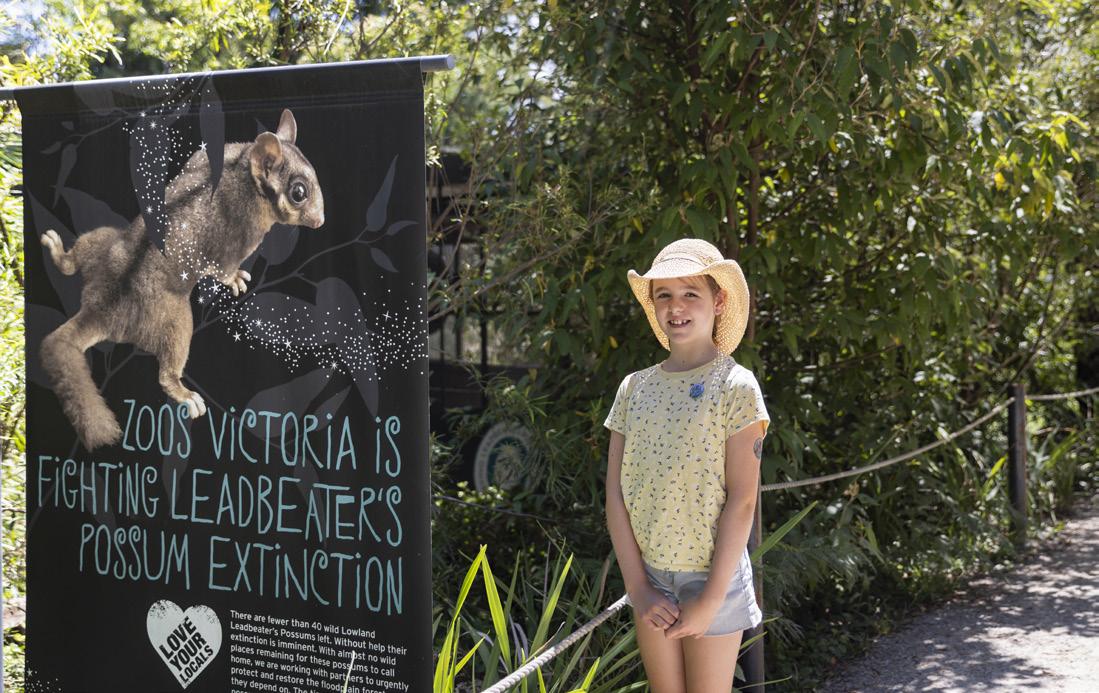
Inspiring people to fight wildlife extinction is an important part of Zoos Victoria’s conservation work. This is especially true for young people, as they will inherit the natural world we’re working to preserve. The hope is to empower the younger generations to take action – big or small –just like nine-year-old animal-lover Arabella. After reading about some children who ran a lemonade stand fundraiser,
Arabella was inspired to do something, too. Although her favourite animal is the echidna, she wanted to choose a species that really needed support. With her mum’s help, she learned about the Critically Endangered Leadbeater’s Possum (Lowland) listed as a Fighting Extinction priority species on the Zoos Victoria’s website. “I chose them because they were so cute, and also because there are less than 40 left in the wild… I didn’t
want them to go extinct, because it’s sad when animals go extinct,” she says.
Celebrating a good cause
Arabella started fundraising at her seventh birthday party, asking people to donate money instead of buying her presents.
“I thought it was a good idea because when I get presents, sometimes I get too many to play with. I also thought it would be a fast way to raise money,” she says.
IMAGES: JO HOWELL
20 ZVMAG
WORDS Alegria Alano
COMMUNITY
To encourage donations, Arabella made posters with information about the Leadbeater’s Possum and a QR code that led directly to her GoFundMe page.
“I felt like I was doing something good. I was proud of myself,” says Arabella. Her party and other fundraising efforts throughout 2021 raised $2,000, but there was more work to do to reach her $5,000 goal.
“I was on the Junior School Council last year and I helped organise a fundraiser,” Arabella says. “We had a possum week at my school with possum face-painting and possum masks at recess for a gold-coin donation.” She’s also talked about her fundraising efforts and shared Leadbeater’s Possum facts at school assemblies. As a result, she raised another $500 and inspired her classmates to host their own fundraisers.
GET INSPIRED
Inspired to raise funds in your community too?
Here are Arabella’s top tips for fundraising success:
Creating the ripple effect
Pick species that need the most help
You can learn more about the Fighting Extinction priority species on the Zoos Victoria website.
Spreading the word about fighting extinction is important to Arabella because of the ripple effect it has: “If they can start doing what I’m doing, then more people do it. And if even more people start, then more and more will help and the world will be better.”
Arabella had another fundraiser for her eighth birthday and has supported her online campaign by making videos encouraging people to get involved. Early this year, she reached her $5,000 fundraising goal.
Arabella hopes to continue to help animals when she’s older by becoming a zoo keeper. “If I’m working at the Zoo then I can teach people about animals and help people love them even
Plan fun activities for your fundraiser to get people excited. DONOR SPOTLIGHT
more than they already do,” she says. Arabella recently met the Leadbeater’s Possum keepers during a special Zoo visit. “They gave us a tour and showed us the possums’ habitat... We saw some of their food, and it smelled really bad! They asked if I wanted to try it, but I didn’t because it had worms in it!”
Fundraising requires effort and support. Arabella’s advice is: “Believe in yourself and make sure you have help – you don’t have to do it alone. Think of the animals that you’re raising money for. What if they were to go extinct? You’d be sad, but if you raise money for them, even if they did go extinct, you know you’ve done something to help.”
Above Arabella enjoyed a special behind- the-scenes tour of the Leadbeater’s Possum facilities during her visit to Healesville Sanctuary.

INSPIRED TO DO MORE?
Learn more about how you can start community fundraising to help Zoos Victoria fight extinction: zoo.org.au/donate/ fundraise-for-wildlife
Do some research and teach people about your animal so they understand how their donation will help. 21 AUTUMN/WINTER 2023
PROTECTING ALL WILDLIFE: TINY AND TALL
We wanted to thank you our supporters for helping us protect all wildlife tiny and tall. Your generosity is key to helping us fight wildlife extinction.
Total income
$243,626.98
Total Unique Donations 3691
Spotted Tree Frogs
Total of Top 20 Gifts $161,833.70
Zoos Victoria plays a major role in the Spotted Tree Frog Recovery Program by maintaining a conservation breeding population, monitoring the existing populations, and reintroducing frogs into the wild.
The Spotted Tree Frog is listed as a Critically Endangered species.
Zoos Victoria has been involved in the Recovery Program for Spotted Tree Frogs since 1991
Found in the mountain streams of north-eastern Victoria and southern New South Wales, there are fewer than 12,000 left in the wild.
10 YEARS
Spotted Tree Frogs can live up to 10 years
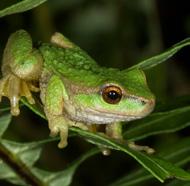
FIGHT WILDLIFE EXTINCTION
Like most frogs across the globe, this species is threatened by Chytridiomycosis, a disease caused by the rapidly spreading Chytrid Fungus.
Asian Elephants
Zoos Victoria’s partnership with Fauna and Flora International supports extensive work in the field to help better understand human—elephant conflict.
Asian Elephants can be found in Sri Lanka, Laos, Thailand, Burma, China, Malaysia, India, Indonesia, Vietnam and Cambodia.
Zoos Victoria’s Asian Elephant herd has grown to 10 elephants, with recent arrivals Aiyara, Roi-Yim and Kati.

53,000
There are fewer than 53,000 remaining throughout Asia, and the wild population is decreasing
The herd are packing their trunks to move to an expansive, purpose-built 21-hectare habitat at Werribee Open Range Zoo in 2024.
Your donation makes all the difference and goes towards important conservation work. If you would like to help us fight wildlife extincting you can donate through zoo.org.au/donate
22 ZVMAG
ANIMAL
ESTATES
Zoos Victoria acknowledges the generosity of those who have given via a gift in their will.
A N & B O Williams Foundation
Kevin Stewart Cowell, a subfund of the State Trustees Australia Foundation
Estate of Patricia Downes
The HGK Bequest managed by Equity Trustees
Estate of Nancy Unice Jenner
Estate of Kathleen Millicent
Lewellin
Estate of Betty Claire Lynch
Estate of Anthony James Major
Merle Carroll Assistance Fund
Shirley Edith Poole, a sub-fund of the State Trustees Australia Foundation
Estate of Leonard Norman Robinson
Estate of Noelle Cynthia Schollenberger
Estate of Dawn Shoebridge
PHILANTHROPIC PARTNERS
Zoos Victoria acknowledges the generosity of those who give via our Philanthropic Conservation Partners program, including those who give anonymously.
VISIONARY
Anonymous (1)
LEADER
Meg Bentley
Zoos Victoria PO Box 74, Parkville Vic 3052
P 03 9340 2780 / F 03 9285 9390
E contact@zoo.org.au W zoo.org.au
The Dyson Bequest
John T Reid Charitable Trusts
Anonymous (1)
INFLUENCER
Lisa Cochrane and Scott Hipkins
Finkel Foundation
Baillieu Myer AC and Sarah Myer
Nick Sims on behalf of Goldman Sachs Gives
Zoo and Aquarium Association
Australasia, Wildlife Conservation Fund
Anonymous (1)
HERO
The Dyson Family
The Fox Family
Purryburry Trust
Lady Southey AC
Sunraysia Foundation
Vizard Foundation
Volkswagen Group Australia
In memory of Dr JD Wilson
Helen Wilson
Anonymous (1)
CHAMPION
S. Allender
Jay Bethell and Peter Smart
The Calvert-Jones Foundation
Brian Coe & Dave Sharp
Mark and Carol Collins
JMS Foundation
Cara Kwok
The Lin Huddleston Charitable Foundation
Naomi Milgrom Foundation
PETstock and Petspiration Foundation (formerly PETstock Assist)
In honour of John Seebeck
Shirley Sullivan
Warranbrooke Pty Ltd
Stuart Webster
Kim Wood
The Wood Foundation
Anonymous (6)
FIGHTER
Allen & Unwin - Albert Street
Books
B M Investments Pty Ltd
Ken and Joy Barassi
The Bartolo Family
Maxine Bowness
Debbie Carruthers
The Cattermole Family
Cincinnati Zoo & Botanical Garden
Alan and Jillian Cobb
Coote Family Lawyers
Debbie Dadon AM
David & Lone Ford
Simon and Christina Edelstein
The Garry White Foundation
Rose Gilder
Alexander Gosling AM and Wirat Sukprem
Lesley Griffin
Hallam-Ho Family
Angela Hey
The Hooper Family
In memory of Jean Margaret Howard
Ian Barker Gardens
Greg Jeffers and Alicia Vengust
Suzanne Kirkham
Melody Ku and Jian An Lim
Alexander and Nicholas Lee
Peter Lemon
In memory of Barbara Martyn
McPhee Charitable Trust
Kujtim Memishi
Microchips Australia
In honour of Helen Anderson Miller
Helen Myall and Alastair Firkin
Nashville Zoo
Janice Pleydell
Nola Schenk
Elaine and Richard Stradwick
Anonymous (4)
Zoos Victoria also acknowledges the generosity of those who give anonymously to support our conservation initiatives.
Zoos Victoria acknowledges the ongoing annual funding from the Victorian State Government.
Please visit our supporters page for further information: zoo.org.au/ donate/our-supporters/ *Donors are from the 2021/22 financial year.
HARDIE GRANT MEDIA
MANAGING DIRECTOR Nick Hardie-Grant ACCOUNT DIRECTOR Scott Elmslie
EDITOR Jo Stewart DESIGN Dallas Budde PRINTER: Immij ZOOS VICTORIA: Angie Retallack, Ethan Jenkins.
Connect with us: Join the conversation on our social media channels. @ZoosVictoria on Twitter and Instagram.
Cover: Asian Elephants at Werribee Open Range Zoo. (Illustration Phil Constantinesco/ The Illustration Room)
23 AUTUMN/WINTER 2023
IMAGES (OPPOSITE): JO HOWELL, RICK HAMMOND
PARTNERS
is published for Zoos
Hardie Grant Media Printed on 100% recycled paper with vegetable-based inks. Zoos Victoria is a carbon neutral organisation.
ZV
Victoria by
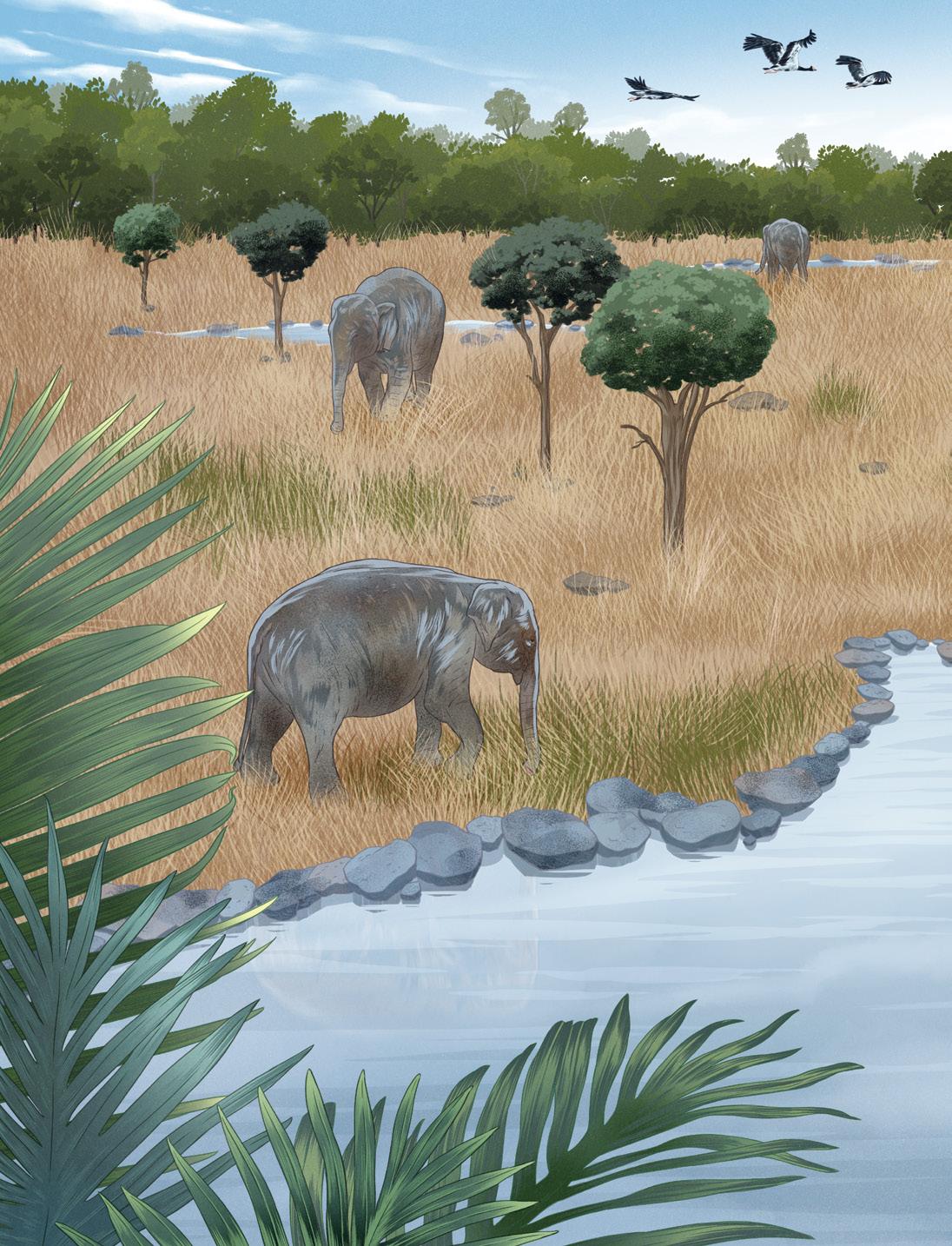
zoo.org.au/donate






















 WORDS Steve Colquhoun
WORDS Steve Colquhoun


 Above Coffee on drying beds in Ethiopia.
Below (left to right) You can stop by any of our zoo cafes for a cup; a worker handling Coffee for Wildlife beans.
Above Coffee on drying beds in Ethiopia.
Below (left to right) You can stop by any of our zoo cafes for a cup; a worker handling Coffee for Wildlife beans.






















